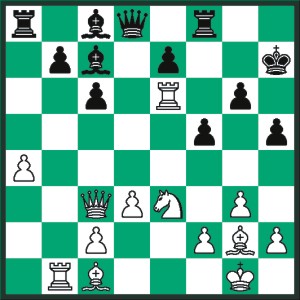|
Time
Out
Freaks
at work Chess
Duncan
Suttles and Michael Basman are little known names in the annals
of chess. They never achieved anything to win great recognition
as a chess master or theoretician. In the seventies, these
two players made their mark with some original, even weird,
play, particularly in the opening. How many of you would dare
to push 1.. g5 after the KP opening? I'm not joking, this
move has been played in reasonably strong tournaments.
Players
like Suttles and Basman are freaks who never hesitate to have
'theoretically unsound' set-ups. No, I'm not suggesting that
you begin to open with 1…g5. Such openings are never
recommended by chess trainers, who don't seem to see anything
beyond 'soundness'. What I really mean is that the highly
unusual openings point to the inexhaustible nature of the
game. Many openings and variations have been analysed to death,
and a number of standard set-ups have emerged. But it seems
you can still go out of the beaten track, though you may not
find many to share your views. Most people are orthodox believers!
What
is it that inspires some players to play highly 'provocative'
openings? Perhaps they want to have their opponents on their
own, right from the beginning. They don't want anybody to
get the full point by memorizing a long variation. That said,
the most important driving force is probably the urge to play
a highly original game.
Even at
the very top level, there are masters who don't like the idea
of playing the opening strictly according to the book. Grandmaster
Victor Korchnoi, who lost two title matches to Anatoly Karpov,
made no secret of his position on theory when he said, "Modern
chess theory, strange it may seem, favours the weak."
Should we then leave the heavy load of information to the
less original, hard working fellows? No!
Here
is a game played by Suttles. It is not that wild, but the
Canadian master adopts a restrained set-up with the white
pieces. Space and time have a different meaning to him!
White
- Duncan Suttles
Black - Pal C Benko [A00]
Hastings, 1973
1.g3 d5 2.Bg2 Nf6 3.d3 g6 4.Bd2 c6 5.Nc3 Bg7 6.Qc1 Qb6 7.Nd1
h5 8.Nf3 Nbd7 9.00 Nc5 10.b4 Ne6 11.a4 a5 12.bxa5 Qd8 13.Rb1
00 14.Qa3 Ng4 15.Re1 Ne5 16.Nxe5 Bxe5 17.e4 dxe4 18.Rxe4 Bc7
19.Qb2 Kh7 20.Ne3 Bxa5 21.Bc1 Bc7 22.Qc3 f5 23.Rxe6 Bxe6 24.Rxb7
Bc8 25.Bb2 Rf6 26.Rxc7 Qxc7 27.Nd5 Qd6 28.Nxf6+ Qxf6 29.Qxf6
exf6 30.Bxc6 Rb8 31.Bb5 Bd7 32.c4 Kg7 33.Kf1 Kf7 34.Ke2 Ke7
35.Kd2 Ra8 36.Kc3 Rxa4 37.Bxa4 Bxa4 38.f4 Bd1 39.d4 Kd6 40.d5
Kc5 41.Ba3+ Kb6 42.Be7 Bf3 43.Kd4 Bd1 44.Bxf6 Ba4 45.Bd8+
Ka6 46.c5 Be8 47.Ke5 Bf7 48.c6 1-0

Position after 23.Rxe6
Copyright
(R) thedailystar.net 2004
| 